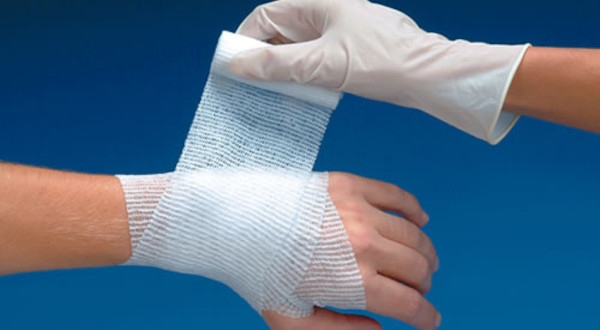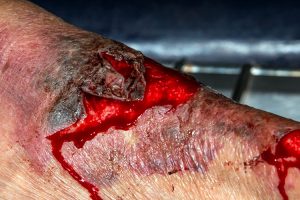
Wound care guideline (part 2) - Dressing abrasions and lacerations
Abrasions are generally acute and in most circumstances go on to heal almost regardless of what is done. Simple abrasions in particular, if not managed by a health professional, form a scab which eventually will drop off, revealing a healed area beneath.
The issue here, however, is that this type of healing is slow and can result in an unacceptable scar.
Management of abrasions
The best management of abrasion is to stop the bleeding, give the area a good clean with an antiseptic and then apply a mesh dressing that will protect the superficial raw area and allow new tissue to form quickly without being damaged when the first dressing is attended. Mesh dressings for this purpose include Mepitel™, Urgotul™, or Hydrotul™.
The secondary dressing on this mesh is generally a light absorbent adhesive pad, such as Cutipast Sterile™ or Primapore™. A secondary waterproof dressing is generally not recommended for this first dressing due to the risk of infection – the excessive heat and moisture will create an environment conducive to bacterial growth.
At the next dressing change, if there are no signs of infection, then a waterproof dressing can be used as the secondary dressing.
Lacerations
After a thorough assessment, a small, simple laceration is generally managed with antiseptic cleansing, Steristrips™ and either a waterproof, light, absorbent dressing or a non-waterproof, light, absorbent, adhesive dressing, using the principles mentioned earlier about risk of infection. More complex lacerations may be referred to an acute care facility or surgeon after initial assessment.
When faced with a complex instance of wound care, many first time or novice clinicians will ask, ‘What wound is this? What dressing should I use? How will this wound heal?’

An aspect of wound care management often overlooked is defining the wound itself. The guiding principles of wound care have always been focused around defining the wound, identifying any associated factors that may influence the healing process, then selecting the appropriate wound dressing or treatment device to meet the aim and aid the healing process.
This structured approach is essential, as the most common error in wound care management is rushing in to select the latest and greatest new wound dressings without actually giving thought to wound aetiology, tissue type and immediate aim.
This overview of wounds and dressings will identify some of the most common wound types and guide you in setting your aim of care and selecting a product or device to achieve that aim.


